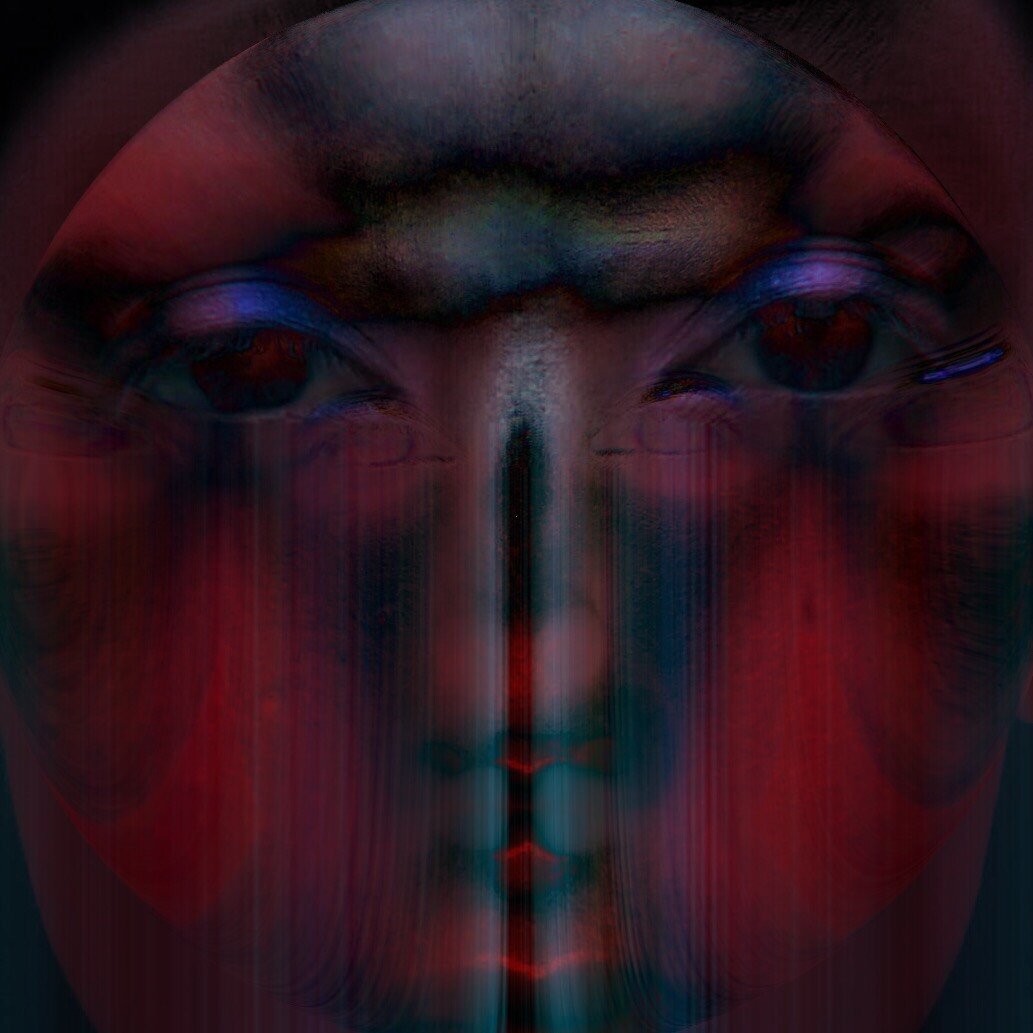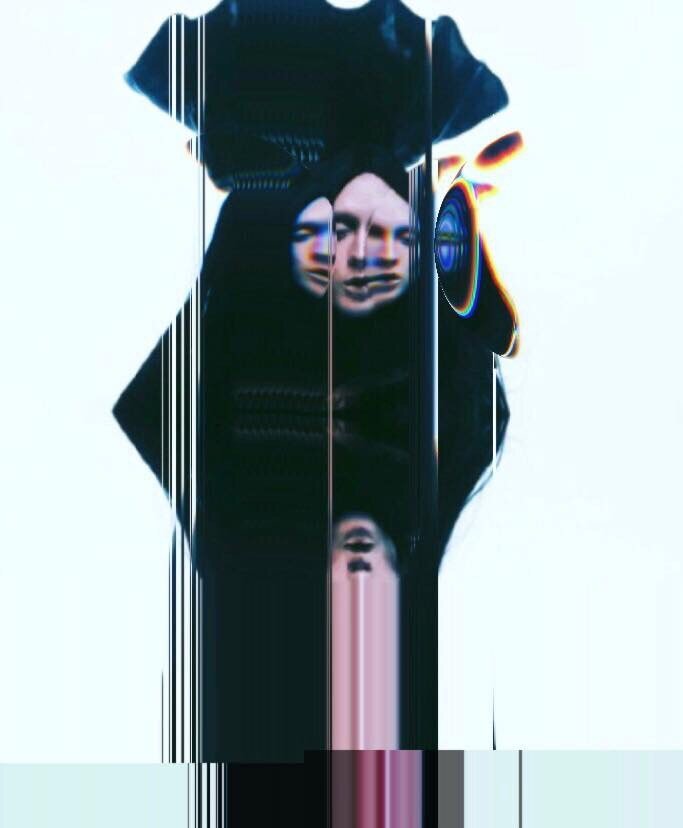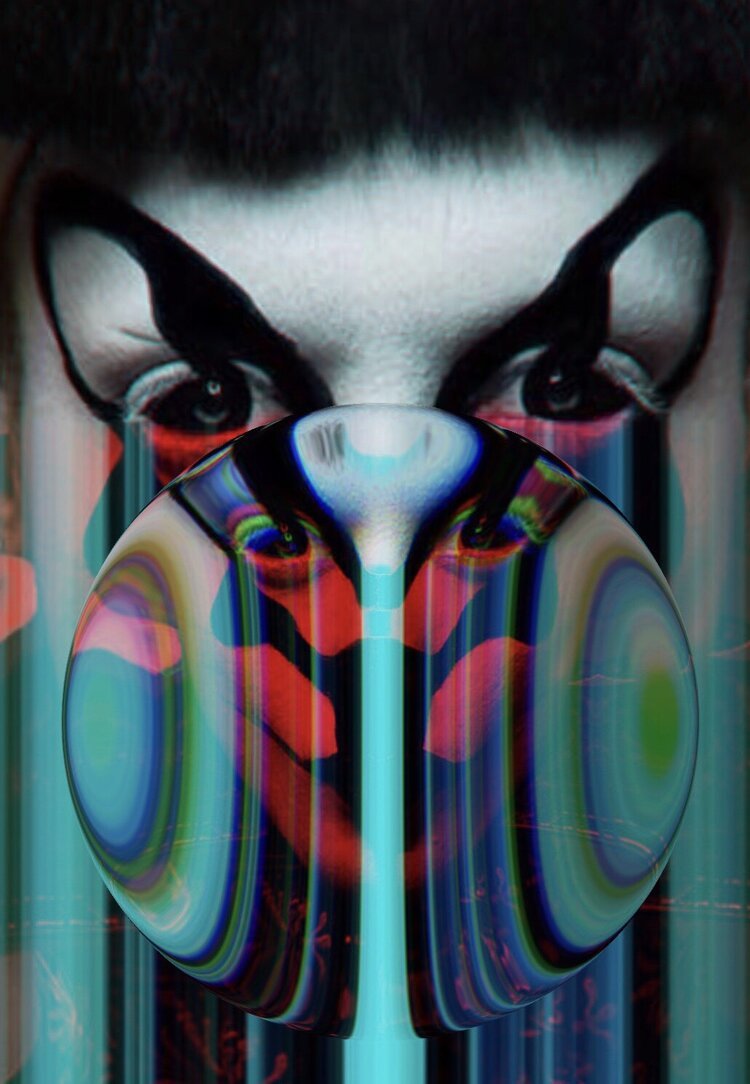Interview with Out-Of-This-World Artist MONARX aka Shamis McGillin
The following interview originally appeared in WUSSY vol.06 print edition. To order your copy, click here.
—
Shamis McGillin is a shapeshifter from the future.
He possesses the ability to morph his face, body and subjects into futuristic art through his lens. He combines his skills as a makeup artist, photographer, retoucher, and art director, to create out-of-this-world conceptual visual art. His images are glitched and collaged into existence, humming with energy, while his styling is reminiscent of 80's New York when hand-crafted sculpture became wearable and innovation was en vogue.
MONARX is the creation of Shamis, crafted with club-kid ingenuity and high fashion execution, MONARX is bizarre, otherworldly and a living piece of art. Like any living thing, Shamis' work changes and grows, the lines between mediums are stretched and blurred, and through it all, we see a vision of what the evolution of art and fashion could look like. We spoke to Shamis about his work, the birth of MONARX, and the influence of the queen Janelle Monae.
What is your relationship between your persona MONARX and yourself as Shamis, the individual?
I am the artist and MONARX is my creation and a vessel for me to explore identity. MONARX isn’t a character, it’s more of a space that I’ve allowed myself to take up and create something meaningful to me. This space isn’t always where I want to be, because it forces me to face the unknown things like ego and the soul, but I want to grow and MONARX forces me do just that.
In your work as a photographer, art director and as MONARX there is a sense of the subject as alien, otherworldly and beyond human. Why do these characteristics persist throughout your work in various mediums?
Aliens as a concept are entities I look up to and hope to see in my lifetime because if they exist, they challenge everything we know about ourselves, our place in the universe, and our origins. I think being in my early 20s I’m constantly in existential crisis of “this can’t be all that there is”. Playing with otherworldly aesthetics is my way of challenging the idea that the world has to always be the way that is is.
MONARX exists in the real world as a nightlife club kid, but a lot of your work is captured through photography and digital images. Do you find any challenges or advantages working through mostly visual mediums?
I started working in nightlife when I was underage. It was a great space at the time to explore my identity as a queer person as nightclubs have sometimes been the only “safe” zone for LGBTQ to explore identity. I quit working in those spaces because my body and mind were violated and I didn’t control the space. In my studio and through digital imagery, I get to have a say in everything I do and no one can touch me. Creating editorials hopefully resonates more than photos of me with a drink in my hand.
Your use of materials and textures for your looks is fascinating, resourceful and shows inventiveness that sets you apart as an artist. Where does that come from?
I’m a cancer, I don’t come from a lot of money, and it’s important to me to have a safety net than spend all I have if I can help it. I didn’t have any money when I started out, so I really had to just see what people were throwing away, get out the hot glue gun and cross my fingers that it didn’t fall apart until after I got in my Uber home. Even with more resources now I love to incorporate materials that are absurd because I think it’s an extension of my challenge to reality and utilitarianism.
Who are some of your biggest influences in any medium?
Janelle Monae. If I didn’t have her music and visuals when I was in high school, I would have been lost. I’ve never seen an artist create such an expansive sonic and visual world while being an activist constantly challenging the her own reality in such an authentic way. She’s also a fan of futurism and sci-Fi so I feel connected to her through that naturally.
—
For more info and work by MONARX, click here.
Nicholas Goodly is the writing editor of Wussy Magazine.
Archive
- February 2025
- November 2024
- October 2024
- September 2024
- August 2024
- July 2024
- June 2024
- May 2024
- April 2024
- October 2023
- July 2023
- June 2023
- May 2023
- April 2023
- March 2023
- February 2023
- June 2022
- April 2022
- March 2022
- January 2022
- December 2021
- October 2021
- September 2021
- August 2021
- July 2021
- June 2021
- May 2021
- April 2021
- March 2021
- February 2021
- January 2021
- December 2020
- October 2020
- September 2020
- August 2020
- July 2020
- June 2020
- May 2020
- April 2020
- March 2020
- February 2020
- January 2020
- December 2019
- November 2019
- October 2019
- September 2019
- August 2019
- July 2019
- June 2019
- May 2019
- April 2019
- March 2019
- February 2019
- January 2019
- December 2018
- November 2018
- October 2018
- September 2018
- August 2018
- July 2018
- June 2018
- May 2018
- April 2018
- March 2018
- February 2018
- January 2018
- December 2017
- November 2017
- October 2017
- September 2017
- August 2017
- July 2017
- June 2017
- May 2017
- April 2017
- March 2017
- February 2017
- January 2017
- December 2015
- November 2015
- October 2015
- September 2015
- August 2015
- July 2015
- June 2015
- May 2015
- April 2015











